-
Posts
71 -
Joined
-
Last visited
Content Type
Profiles
News and Information
Tutorials
Product Reviews
Supplier Listings
Articles
Guitar Of The Month
Links and Resources
Forums
Gallery
Downloads
Posts posted by Ken Bennett
-
-

And the alignment looks pretty good from this angle too.
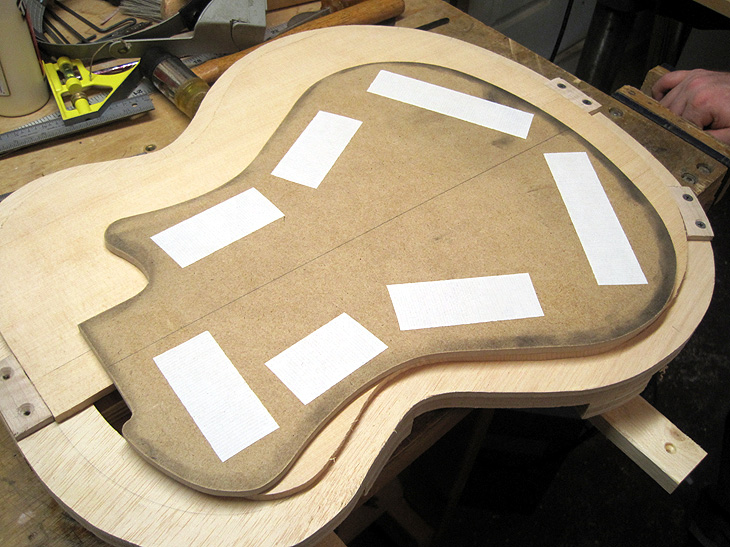
Double stick tape will hold the 1/4" template to the underside of the archtop guitar top.
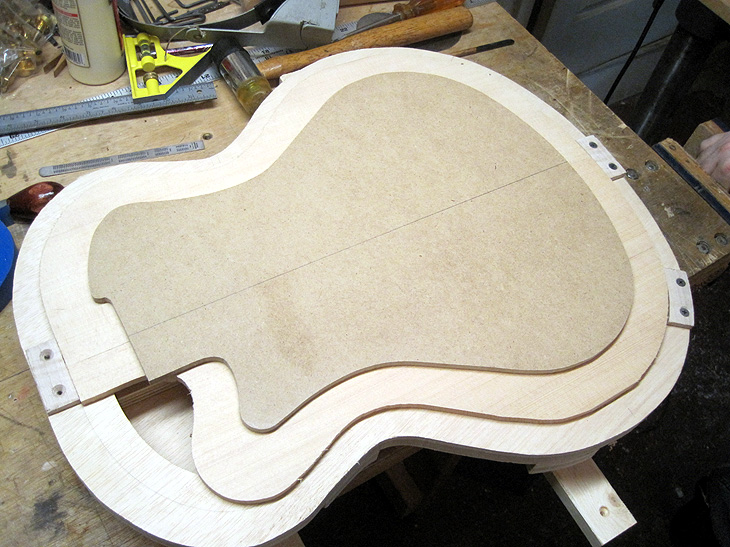
The template attached to the top, ready for operation
-
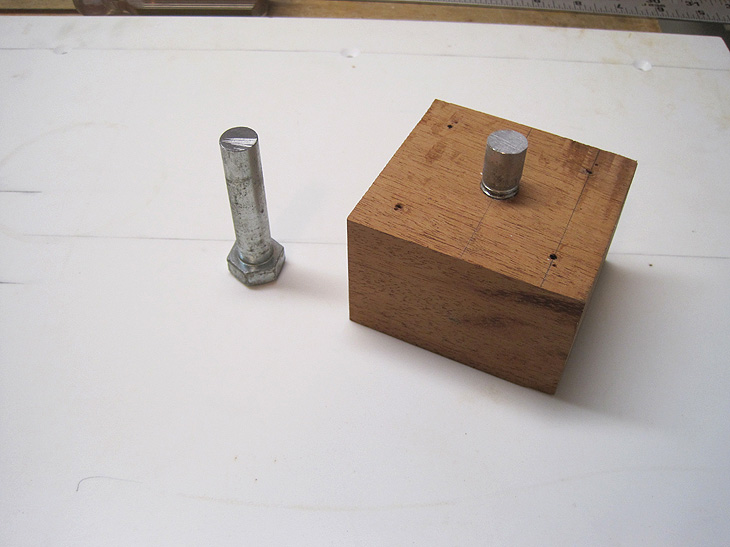
The pin is a 1/2" bolt screwed into a 7/16" hole and sawed off. The top of the pin filed smooth and the corners broken slightly.

Assembled and aligned, the pin protrudes 7/64" above the table.

The pin aligned with the bit in one axis
-
Hi Ya'll,
This is my first thread. I hope you find it useful.
The other day we were starting to carve to tops of our new archtop guitars. At a certain point we realized it would be good to go ahead and precisely define the edge thickness and the line at which the arching starts to rise above the edge. Later this flat area will be scooped out to create what violin guys call the channel. Benedetto calls it the recurve.
The goal was to make something quick without having to go to the hardware store. It worked beautifully. We took a few snapshots during construction, so I thought it might be a good thing to share.
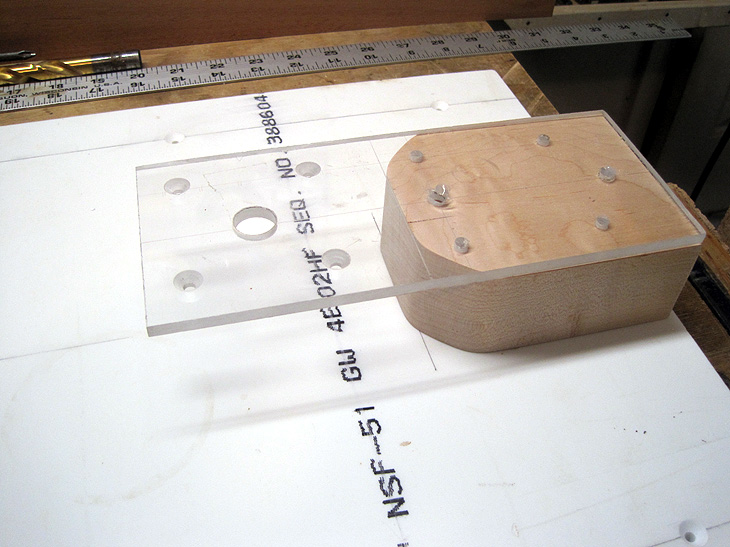
A base for my laminate trimmer router sitting on a mahogany riser at the end of a corian table
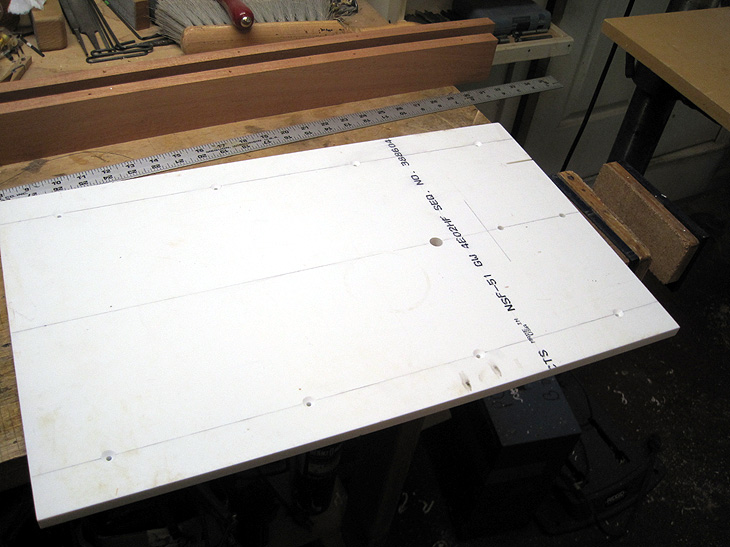
The corian table, with some of the layout and drilling done, and the mahogany rails that will support it
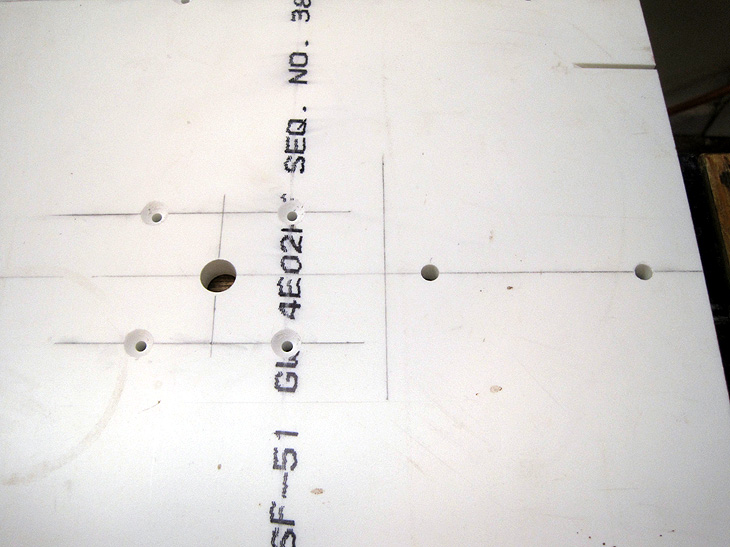
Table drilled for the pin assembly
-
For setups I use feeler gauges under the string at the first fret. If it is a fretless bass, I use the same gauges under the string where the first fret would be.
For a 5-string bass:
1 .020" .5mm
2 .023" .58mm
3 .026" .66mm
4 .030" .76mm
5 .035" .89mm
-
ihocky2 is right. But in practice you are not going to be moving the frets. So when you move the saddle, you don't change the scale length, just the compensation factor.
-
I've moved many a saddle slot for that very reason. The nut may even be in the wrong place. Sometimes on older cheap guitars you will even see frets out of position.
The scale length is fixed and determined by the fret spacing, not by the location of the saddle.
Moving the saddle only moves the 12th fret harmonic half as much. The intonation error is more apparent to the ear than harmonic is to finger position.
If you know what the scale length is supposed to be, you can calculate an acceptable position for the saddle. Start by measuring nut to 12th fret, multiply by 2, and add .1 to .15 at the middle of the saddle to find a starting point (If the nut is out of postition, that theory is no good). Then make sure the saddle is angled correctly (rotated around that point).
You'll love it when you're done.
-
Cedar? Douglas Fir? (guessing)
-
Thanks Prostheta and Mikro. Haven't find my old photos yet. I'll come back with a story though.
Mikro, those are some nice headstock templates. One of my favorite uses for CNC is to make templates. We have a local guy whose business is large productions runs of big stuff. He does our little one-off guitar templates for about $10 a piece, usually in 1/2" phenolic.
-
You guys are making some impressive machines.
After reading this thread late last night, I was so excited I could hardly sleep.
Among other things, I was the CNC guy at Warrior for a while (Still do some programming for them). We got a 24" x 48" three axis machine built by Ron Thorn. During the 2001 winter NAMM I got to spend a day in Ron's shop getting trained. What a brilliant man! It's a cool little machine too. I'll see if I can dig up a picture. There are a few hilarious CNC-Gone-Wild stories too.
Anyway, when I left Warrior and set up my own shop, I designed a machine similar to theirs. Still haven't built it though. It's going to cost around $3000 unless I employ some cost cutting measures such as you have done.
Thanks for the inspiration.
-
Good questions. Option 3 would be layer it up so you have both woods in body and neck.
-
Nice guitar, jimmyg. Yes, it does get easier making basic guitars. Keep it up.
-
I like the offset horns (tulip petals?) in the new design.
-
looking good, But id chamber out more of it. Double necks can get realy heavy. I have one on the go just now & have almost hollowed out the whole top guitar because of previous experiance.
Any idea of the weight of this one at the moment ?
I was hoping someone would "weigh" in on this subject. I don't want it to be too heavy, but I still want there to be enough structure for sustain. Right now I think I've got it at close to 1" around the perimeter and about 3/8" thickness at the bottom of the cavities. Is there a rule of thumb as far as how much material thickness to leave? 1/2 inch, 1/4 inch?
I'm also planning to rout matching shallow cavities into the topwood before I glue that on. Any other suggestions are greatly appreciated.
Hey, this is a beautiful project.
I have not done a double neck. But on chambered guitars, my practice is to leave 3/8" minimum thickness at the sides (up to 1" where hardware is attached, like strap buttons), and leave 3/16" minimum thickness on the back. You could remove a lot more wood before you hit those numbers. You could also remove wood in the center between the two necks. You could hollow out the underside of the top; but if it is a flat, uncarved top on a chambered guitar, I make the top 3/16" to start with.
No matter how much the body weighs, it still has to balance the necks. I'd rather have a heavy guitar than one with a neck that you have to hold up.
-
The cavities for the brass letters are cut the normal way--dremel router with 1/32" bit. It's tricky holding the dremel with very little flat surface to rest upon.
Oh, and I didn't try to trace the letters onto the wood. Normally I use a fine hard pencil to trace inlay pieces for routing. For this job, I glued a printout of each letter in place first, routed, cleaned off the paper, glued the letters in, filled the gaps....
One of the letters turned out crooked. I had to dig it out, make a new one, and do it again.
-
John, I'm new here and just looking around. Found this thread very interesting. Beautiful guitar.--Ken
-
Here's a little brass inlay. It's very easy to work. The position markers will be protected by the clear coat; any will do. The exposed brass on the fretboard will have to be cleaned occasionally.
Letters cut from .060" brass stock. I used a text font as a pattern. I think it's called Frigidaire, or Air Conditioner, or something like that.
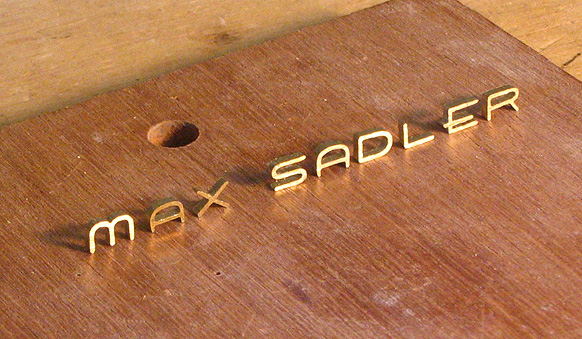

In the next photo you can see where the fret slot is widened, as DC Ross said, with .032" end mill. These two frets will be held in with epoxy.
The horse is cut from brass and filled with ebony. The green and red materials are reconstituted stone.


Good luck with your guitar projects.
-
Sweet guitar, jarvey. Very cool.



Guitar Of The Month For October
in Guitar Of The Month entry/poll archive
Posted
Nice guitars, everyone.
The Dimple is a very elegant, traditional looking guitar with features that I appreciate: mahogany body, warm transparent colors, simple controls, humbuckers.... It looks good; undoubtedly sounds good; and if it doesn't play good, it sure looks like it could be setup to do so.
The Sheriff touched me because of the stage picture. I like to see guitars out working. It's not how much a guitar costs, but how much money you can make with it that matters. Well, that's just the money part--I love any guitar for any reason.
I missed the E.R.O. Where are the pics? The description sounds very interesting.
Awesome woods on The Tortoise. Not a fan of fanned frets though. If it's for the improved response on the bass strings, why not just use heavier gauges on the low end?
Orange Lady is a fine guitar I'm sure. But you have to vote your conscience, right? Fanned frets rule it out for me, for now--I'm still not too old to change though. Plus I've been seriously thinking about playing a seven-string.